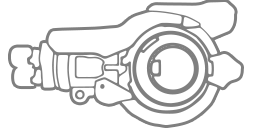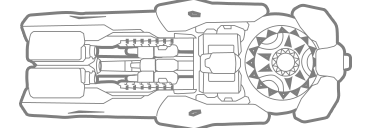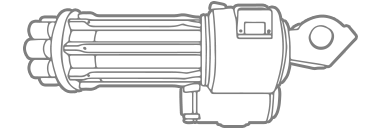Patch Notes
Overwatch 2 PvP Beta Patch Notes - April 29, 2022
BUG FIXES
- Fixed some crashes
- Fixed a bug where the hero info screen could get locked over the in-game screen
Mercy
- Fixed a bug where Mercy’s chain heal was not working
Overwatch 2 PvP Beta Patch Notes - April 26, 2022
NEW FEATURES
Welcome to the Overwatch 2 PvP Beta! We have a fresh lineup of heroes, new maps and game modes, 5v5 multiplayer, and more! Please keep in mind that everything you see in the beta is a work in progress. It's important for us to gather valuable feedback and insight from our players, so things are likely going to evolve throughout the beta phases. You may notice some features from Overwatch are absent in the beta. This reflects the game's current work in progress state, and it will change throughout testing! We appreciate everyone's interest, and we can't wait to share more.
To share general beta feedback, please post in the General Beta Feedback forum.
If you encounter any bugs or issues, please share in the Beta Bug Report forum.
You can also share feedback on specific forum topics such as 5v5, Push, Hero Reworks, New Maps, and Sojourn.
Push is a new game mode available on two brand-new maps: Toronto and Rome. Gameplay unfolds with two opposing teams fighting over control of a single shared objective, the Treadweather TS-1 Large Utility Robot, that starts in the middle of the map.
Each team fights to take control of TS-1 as they would a payload: by having teammates located next to TS-1 with no enemies nearby. When a team takes control of TS-1, it slowly pushes their team’s barricade towards the opposing team’s start location along the predetermined path. If TS-1 and the barricade reach the goal at the end of the path, then the team controlling TS-1 wins the game.
When the opposing team takes control of TS-1, it leaves the first team’s barricade in place and reverses its direction. TS-1 then quickly moves back along the path until it reaches the opposing team’s barricade, which then pushes towards the first team’s spawn.
Midway between TS-1’s starting location and each team’s end goal, there is a forward checkpoint objective along the path. When TS-1 pushes a team’s barricade to their forward checkpoint, that team activates a closer respawn location. This respawn location deactivates if the other team retakes control of TS-1, then moves TS-1 to a point on the path before the forward checkpoint.
Players have 8 minutes to push their team’s barricade to the end goal and win. If neither team’s barricade reaches its end goal after 8 minutes, then the team who pushed their barricade the farthest distance AND has control of TS-1 wins. The game enters overtime if control of TS-1 is contested, or the team who currently has control of TS-1 does not have the farthest distance pushed. Overtime ends when the team with TS-1 loses control of it, or when the team with control of TS-1 pushes their barricade to a distance exceeding the opposition’s.
With the addition of the Push game mode and its new maps to Overwatch, we’ve decided to remove all the maps using the Assault game mode from both the Quick Play and Competitive map rotations.
After examining all our maps and game modes, we noted that the Assault game mode has always been a source of discontent for many members of our community. We believe many of the issues for the Assault maps could only be solved by making major changes to the game mode and major reworks to the maps, resulting in complete level rebuilds. We’ve shifted our focus to create maps in exciting new locations across the world such as Toronto and Rome.
Although Assault maps will no longer be in standard rotations, all Assault maps (Hanamura, Temple of Anubis, Volskaya, Paris, and Horizon Lunar Colony) will still be available for use in custom games and the workshop. We’ll also look for future opportunities to bring them back into Quick and Competitive map rotations, as well as special events and arcade game modes.
For the Quick Play and Competitive Role Queue modes, the team composition now consists of 1 Tank, 2 Support, and 2 Damage heroes. For Quick Play Classic, Open Role Queue, and arcade modes such as CTF or Mystery Heroes, the number of players on a team is now 5 instead of 6.
With one fewer player on each side, individual contribution means more to the overall success of the team. Fewer players on the map also changes gameplay in a host of positive and sometimes subtle ways. Players have more space to spread out, and the battlefield is easier to understand with fewer visual effects and sounds happening around you.
The removal of one Tank hero in restricted role queues has allowed us to rework all our Tank heroes to be even more impactful and fun to play. This change increases gameplay clarity for all hero roles, and makes matches play more fluidly.
We’re making a large change to the Scoreboard screen by displaying key statistics in real time for all the players in the game, including eliminations and deaths. They’ll be presented in a new layout that mirrors other competitive games and sports. This new layout should provide players with an overall more accurate view of the game.
As a result of this change, we are retiring the Fire and Medal systems. Both systems are no longer as necessary with the new Scoreboard providing a more accurate and easier to read view of each player’s performance-related data. We do plan on revisiting the Fire system in the future, as it can provide excitement and positive feedback around awesome plays made by you or your teammates. These changes are a work in progress, and we are looking forward to hearing what the community thinks about these updates!
SOUND
- New weapon fire audio for all heroes
- New “Convolution Reverb” System – more realistic environments
- 3D Reverb – can hear the environment your enemies are shooting in, giving more
gameplay information - Weapon and Explosion Tails –decaying of weapons and explosions now reflect the
environment in which they occur - Debris Updates – a more complete pass to have weapon impacts and explosions react to the surface that they impact
- Whiz-by Updates - new bullet pass by audio for ballistic weapons
- Speed of sound adjustments for very long-range impacts and explosions
- Added a "Kill Stinger” sound for final blows
- Added a “Teammate Down” sound to help you know when you lose a teammate in
battle
- Performed a consistency pass across all damage sounds
- Added different impact sound for different types of health (regular, armor, shields,
overhealth)
- Enhanced use of the subwoofer/LFE channel
- Enhanced multi-channel panning
- Teammate and Enemy Eliminated optional sounds
- There are two new settings in the sound options to turn on sound when a teammate or an enemy are eliminated
We have added audio mix options for various common settings (home theater, TV, headphones, etc.). They are still in the early stages of tuning and will likely change as we develop them through the betas.
We have added unit impact sounds that now corelate with the type of health pool you are impacting – for example you will get armor impact sounds on Reinhardt until his armor is depleted, and flesh impact sounds when in his default health pool. This is true of all heroes regardless of what material type they are made of.
FEATURES
This highly requested feature is finally making its debut in Overwatch! Bound to middle mouse, G, and D-pad left by default, the Ping System arrives with a suite of new communications options. Ping allows players to place waypoints anywhere in the world to strategize with their allies or suggest which enemy heroes to attack. Tapping the Ping button will fire a contextual Ping that highlights a location, marks enemies, confirms allied Pings, objective Pings, or even tells injured allies to group up with you if you’re playing Support! Pressing and holding the Ping button opens the Ping Wheel, where you can select from a variety of pings that can be placed in the world or on your hero. Double-tapping the Ping button places a Warning ping, for when you can’t see an enemy hero but want to let your team know about potential danger. Many of the Ping System’s parameters can be modified in Options>Controls. Please share your feedback about the Ping System and any improvements you’d like to see in the future! We will continue to adjust the Ping System as we progress throughout testing, but here are some current work in progress elements:
- Enemy hero ping icons are using temporary art
- Controller support is in progress
- There are text-to-speech placeholders for some pings while we finish the recording
process - Localization is only partially complete for a few languages.
Read About the ping system in our blog: An inside look at the ping system in Overwatch 2.
- Visual updates to some Hero HUD items and in-game HUD elements
- Some elements of the HUD have not been addressed yet
MAPS
Ilios
- (NEW) Evening Lighting
Lijiang Tower
- (NEW) Dawn Lighting
Oasis
- (NEW) Night Lighting
(NEW) Circuit royal
- Circuit royal, the stunning future playground of the mega-rich, is Overwatch's brand-new Escort map. Protect the payload as you battle up the gilded promenade through the marble archways of luxurious Monte Carlo towards the majestic Hotel Arche.
Dorado
- (NEW) Evening Lighting
Route 66
- (NEW) Night Lighting
(NEW) Midtown
- Midtown, New York City, the site of some of the fiercest fighting in the Omnic Crisis, and our newest Hybrid map! Drive your enemies back through the shadows of skyscrapers. Then, lay claim to the payload and escort it through the thriving heart of Manhattan to its destination in historic Grand Central.
King’s Row
- (NEW) Evening Lighting
Eichenwalde
- (NEW) Evening Lighting
(New) New Queen Street
- New Queen Street, in post-reconstruction Toronto, is one of our new Push maps! Fight for control of your robotic ally as the snowflakes and maple leaves fall and explore this picturesque cultural hub where omnics and humans live together in harmony.
(New) Colosseo
- Colosseo, the pride of Rome, is our second new Push map! Face your foes in the streets and piazzas outside the legendary arena, battling for command over your robotic ally. Rise to glory in the Eternal City... or fall, forgotten, into history.
- Kanezaka
- Malevento
HEROES
Tank
- 30% knockback resistance
- 30% lower Ultimate generation from damage taken and healing taken
Damage
- 10% faster movement speed
Support
- Regenerate 15 health-per-second after 1 second without being damaged
- Temporary Shield and Armor health pools have been combined into Overhealth, with no special attributes
- Overhealth no longer provides Ultimate charge when damaged
- Base Armor health pools reduce incoming damage by 30%
- Base Armor no longer mitigates damage by the previous flat amount of –5 damage per hit
- Armor damage reduction now applies equally to all sources including damage over time effects and beams
- Phase effects no longer clear the Zarya Graviton Surge or Sigma Gravitic Flux movement restriction effects
- E.g., Reaper can still use Wraith Form while in Graviton Surge to prevent damage but can’t walk out of it
- Mei Cryo-Freeze no longer removes Sigma’s Gravitic Flux effect
- Sombra Hack effect is now removed by phase effects
TANK

Doomfist
- Moved from Damage to Tank role
- Base health increased from 250 to 450
Rising Uppercut
- Ability removed
- Damage reduced from 6 to 5 per pellet
- Ammo regeneration rate increased from once every 0.65 seconds to 0.4 seconds
- Impact damage range reduced from 50 - 100 to 15 - 30 damage
- Wall slam damage range reduced from 50 - 150 to 20 - 40 damage
- Maximum charge up time reduced from 1.4 to 1.0 seconds
- Impacting a target now causes a secondary larger cone area check to grab extra targets to potentially knock them back as well
- New Ability 2
- Enter a blocking stance, reducing damage taken from the front by 90%
- Blocking at least 100 damage causes Doomfist’s gauntlet to become supercharged, empowering the next Rocket Punch in the following ways:
- Increases damage by 50%
- Travels 50% faster and further
- The area-of-effect blast that knocks back additional targets is twice as large
- Targets impacting a wall will be stunned for an additional 0.5 to 1.0 seconds, depending on charge amount
- Moved from Ability 2 to Ability 1
- Now launches Doomfist into the air in the direction the player is aiming
- Creates a wide arc shockwave upon landing, dealing 50 damage and slowing enemy movement speed by 30%
- No longer has different behavior between being activated in the air or on the ground
- No longer pulls in enemies
- Can be canceled by pressing the ability key again
- Damage range reduced from 15 - 200 to 15 - 100
- Impact damage at the center 1 meter radius unchanged from 300 damage
- Knockback removed
- Now additionally slows the movement speed of all enemies hit by 50% for 2 seconds
- Cast time reduced from 1.0 to 0.5 seconds
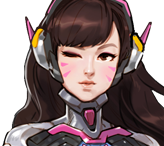
D.Va
- Base Health increased from 300 to 450
- Base Armor reduced from 300 to 200
- Primary Fire movement penalty reduced from 50% to 40%
- Weapon spread reduced from 4 to 3.5
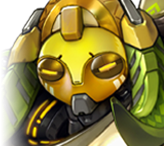
Orisa
Thanks to years of combat and Efi Oladele's tireless work, Orisa's mind and abilities have evolved. She has fully grown into her role as the defender of Numbani.
- Base armor increased from 200 to 250
- Base health increased from 200 to 250
- New Primary Fire
- Now rapidly fires 10 plasma projectiles per second
- Projectiles start out large and shrink as they travel
- Damage starts at 10.5 and scales down to 4 damage over 35 meters
- Uses a heat mechanic instead of ammo
- Firing the weapon increases heat, and it cools down while not firing
- If the weapon overheats, a forced release of heat prevents the weapon from being fired for 3 seconds
- New Secondary Fire
- Orisa throws a spear forward, impacting the first enemy in its path
- Deals 80 damage
- Stuns enemies for 0.2 seconds and knocks them back 6 meters
- If the enemy collides with a wall while being knocked back, they take 40 more damage and are stunned an additional 0.3 seconds
- Now slows Orisa’s movement speed by 20% while active
- Now provides 125 extra health while active
- Reduces heat generation from Orisa’s weapon by 50% while active
- Duration increased from 4 to 4.5 seconds
- New Ability 2
- Orisa rapidly spins a spear for 1.75 seconds, destroying incoming projectiles
- Increases forward movement speed by 60% while active and by 20% for 2 seconds after the spinning ends
- Rapidly damages enemies in her path, dealing up to 90 damage and constantly knocking them back
- New Ultimate Ability
- Orisa pulls in nearby enemies and becomes fortified, charging up an area-of-effect attack over 4 seconds. Releasing the charge deals up to 225 damage based on how long it was channeled
- While charging, deals minor damage over time and slows nearby enemy movement speed by 30%

Reinhardt
- Base armor increased from 200 to 300
- Base health increased from 300 to 350
Steadfast
- Removed and replaced by Tank passive
- Health reduced from 1600 to 1200
- Regeneration rate reduced from 200 to 144 health per second
- Steering turn rate increased by 50%
- Can now be manually cancelled
- Charge Pin wall impact damage reduced from 300 to 225
- Cooldown from 10 to 8 seconds
- Now has 2 ability charges
- Damage reduced from 100 to 90

Roadhog
- Base health increased from 600 to 700
- Total healing increased from 300 to 350 health
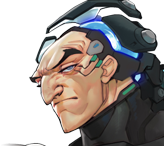
Sigma
- Base shields increased from 100 to 200
- Damage increased from 70 to 100
- Barrier regeneration rate reduced from 120 to 100

Winston
- Base armor increased from 150 to 200
- New Secondary Fire
- Hold Secondary Fire to charge, release to fire a 30-meter range jolt of electricity
- Deals up to 50 damage
- Costs up to 20 ammo
- Barrier Projector health increased from 650 to 800
- Barrier Projector duration reduced from 9 to 8 seconds
- Cooldown reduced from 13 to 12 seconds
- Ultimate cost increased by 10%
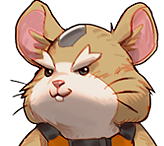
Wrecking Ball
- Base armor increased from 100 to 150
- Base health increased from 500 to 550
- Radius increased from 8 to 10 meters
- Health gained per target increased from 75 to 100 health

Zarya
- Base health increased from 200 to 250
- Base shields increased from 200 to 225
- Particle Barrier now has a 10 second cooldown on a shared 2 charge system with Projected Barrier
- Cooldown now begins immediately on ability use instead of when the barrier has expired
- Barrier's duration increased from 2 to 2.5 seconds
- Projected Barrier now has a 10 second cooldown on a shared 2 charge system with Particle Barrier
- Cooldown now begins immediately on ability use instead of when the barrier has expired
- Barrier's duration increased from 2 to 2.5 seconds
- Barrier targets cannot be targeted again by the ability for 2 seconds
- Energy degeneration increased from 1.8 to 2.2 per second
DAMAGE
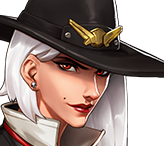
Ashe
- BOB base health reduced from 1200 to 1000

Bastion
Self-Repair
- Ability removed and replaced by A-36 Tactical Grenade
Configuration: Tank (Ultimate)
- Ability removed and replaced with Configuration: Artillery
Ironclad (Passive)
- Ability removed
- Weapon damage increased from 20 to 25
- Fire rate reduced from 8 to 5 shots per second
- Weapon spread removed
- Ammo reduced from 35 to 25
- Renamed from Configuration: Sentry
- Bastion is now able to move in this form at 35% reduced movement speed
- Now has a 6-second duration and 12-second cooldown
- Now has infinite ammo for its duration
- Weapon spread is now a constant 2 degrees and no longer becomes more accurate as you fire
- Damage reduced from 15 to 12
This ability replaces self-repair, but it is bound to Alternate Fire instead of E by default.
- New Secondary Fire
- Launches a grenade that can bounce off walls but sticks to players or the ground. It explodes after a short delay, dealing up to 130 damage
The targeting works similarly to Doomfist’s Meteor Strike Ultimate, but you can click 3 times to launch projectiles.
- Locks Bastion into place to fire up to 3 long range artillery shells
- These shells deal high damage in a large area, but the damage falloff is significant
- The projectiles come straight down from the air at the targeted locations, but they are projectiles in every other sense and can be blocked or destroyed by abilities

Cassidy
Flashbang
- Ability removed and replaced by Magnetic Grenade
- Secondary fire “Fan the Hammer” fire rate increased by around 7.5%
- Throws a grenade that can stick to enemies
- Automatically homes in on an enemy close to the reticle when thrown within 10 meters of the target and can chase up to 13 meters
- Deals 131 damage split between: 1 impact damage, 65 explosion damage, and an additional 65 damage to the stuck target at the time of detonation
- Now grants 40% damage reduction while channeling the Ultimate
- Damage now builds at 130 damage-per-second for the first 2 seconds and then at 260 damage-per-second for the remaining duration
- Maximum duration increased from 6 to 7 seconds
- Ultimate cost increased by 10%
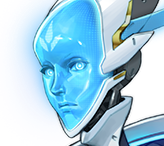
Echo
- Maximum damage-per-second reduced from 200 to 175
- Echo copies the target’s combined health value including health, armor, and shields up to total of 300 health
- E.g., A duplicated Tracer will have 150 health and a Reinhardt will have 300 health

Hanzo
- Damage reduced from 70 to 65

Junkrat
- No longer prevents all movement for its target
- Now slows its target by 65% until they reach its max chain length, then it breaks
- Still prevents movement abilities from being activated
- Damage increased from 80 to 100
- Projectile speed increased from 10 to 17

Mei
- Freeze stun removed
- Immediately slows targets by a constant 50% instead of building up over time
- Slow duration reduced from 1.0 to 0.5 seconds
- Damage-per-second increased from 55 to 100
- Ammo increased from 120 to 150
- No longer removes Sigma Gravitic Flux effect
- Pillar health reduced from 400 to 250
- Range reduced from 35 to 20 meters
- Ultimate cost increased by 15%
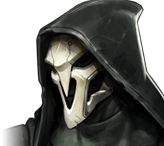
Reaper
- Damage per pellet reduced from 6 to 5.4
- Spread increased from 6 to 8

Sojourn
- Rapid firing projectiles that generate energy on hit
- High impact shot that consumes stored energy
- Launch an energy burst that snares and deals damage to enemies within it
- Ground slide that can cancel into a high jump
- Ultimate Ability
- Railgun energy auto-charges for a short duration and shots pierce enemies
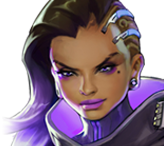
Sombra
- Damage reduced from 8 to 7
- Spread reduced by 10%
- Cooldown reduced from 8 to 4 seconds
- Cooldown is no longer reduced when hacking health packs
- Cast time increased from 0.65 to 0.85 seconds
- Health pack hack duration reduced from 60 to 30 seconds
- Ability lock duration reduced from 5 to 1 second
- Reveals hacked enemies through walls to Sombra's team for 8 seconds
- Interrupting Hack during the channel time now incurs the full cooldown
- Stun duration on Bob reduced from 5 to 2 seconds
- Now destroys Baptiste’s Immortality Field when it is hacked
- Fade-in time reduced by 50%
- Enemy detection radius increased from 2 to 4 meters
- Can now use Hack during Stealth without ending the Stealth ability, but is revealed to enemies while hacking and for 0.75 seconds after hacking
- Damage dealt to hacked targets is now increased by 40%
- In addition to hacking them, now also deals 40% of current health as damage to enemies
- No longer deals additional damage to base shield health pools
- EMP still deals massive damage to barriers

Tracer
- Damage reduced from 6 to 5

Widowmaker
- Base health increased from 175 to 200
SUPPORT
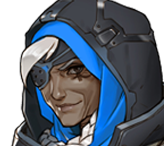
Ana
- Cooldown increased from 12 to 15 seconds
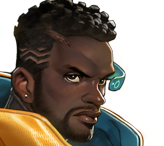
Baptiste
- Primary fire minimum falloff range reduced from 25 to 20 meters
- Total healing increased from 75 to 100 health

Brigitte
- No longer stuns enemies
- Cooldown reduced from 7 to 5 seconds
- Distance travelled increased from 7 to 12 meters
- Movement is no longer stopped when impacting barriers
- Damage increased from 1 to 50
- Now also triggers from Shield Bash damage

Lucio
- Ultimate cost reduced 12%

Mercy
- Now increased the Support passive healing by 50%
Beta Patch Notes
These patch notes represent general changes made to the Beta version of Overwatch 2. The changes listed impact Quick Play and Custom Games.




